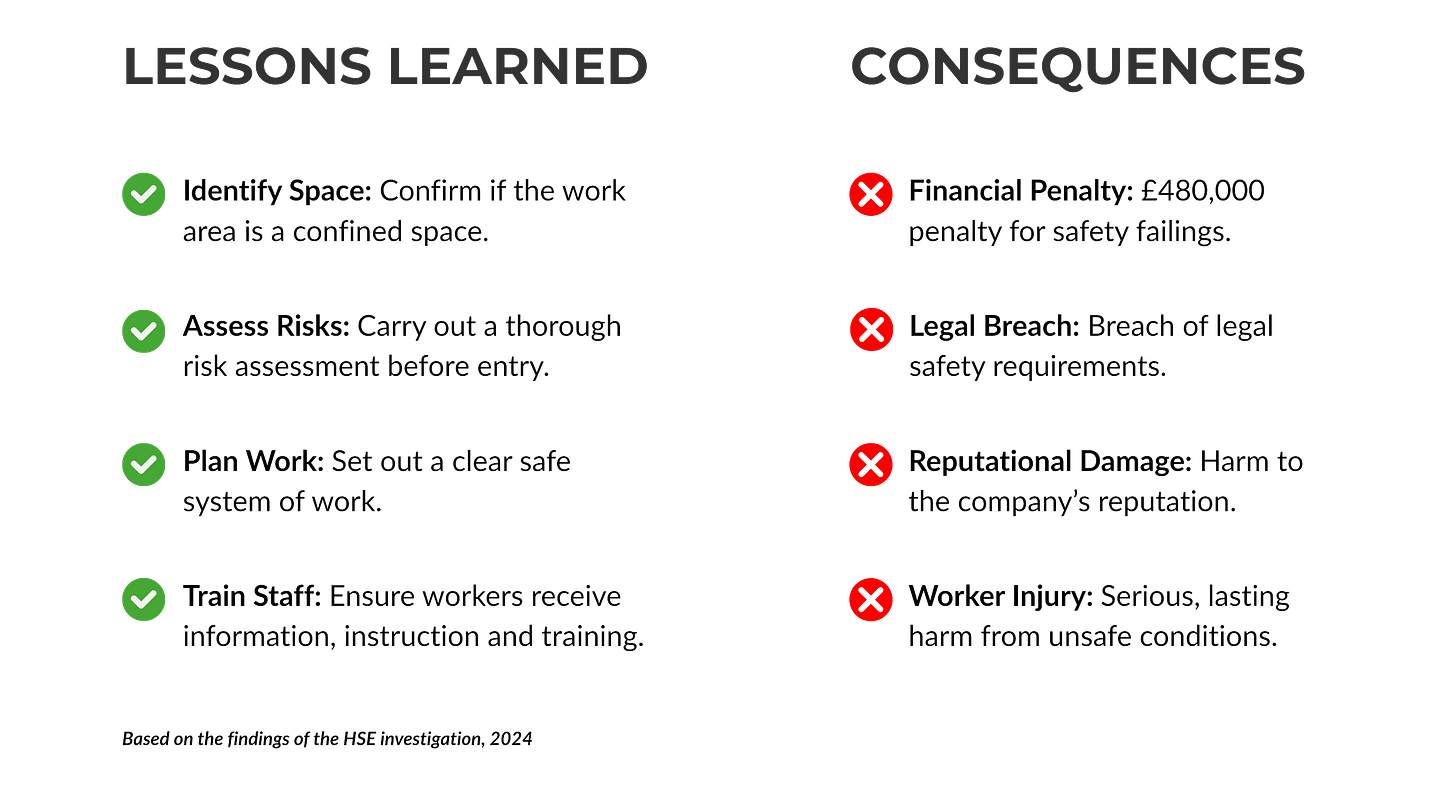The Hidden Dangers of Confined Spaces: Lessons from Real Incidents
Learn how poor planning led to a £480,000 fine — and how you can avoid making the same mistake.
It’s easy to miss a confined space until something goes wrong. This article explains how to spot them, how routine work can make them dangerous, and why risk assessment is essential.
What Makes a Space Confined?
A confined space is any fully or partially enclosed space where there is a risk of serious injury or death. This could be due to hazardous substances, restricted airflow or dangerous work activities.
Common examples include:
Tanks
Silos
Manholes
Sewers
Excavations
Lofts
Poorly ventilated rooms
To help you determine whether the space you’re working in qualifies as a confined space, here’s a simple decision tree:
How Work Activities Can Create a Confined Space
A space doesn't need to be fully enclosed or obviously dangerous to become confined. Sometimes, the work itself creates the risk.
Certain tasks can change the environment by blocking airflow, introducing hazardous substances, or creating conditions where oxygen levels drop or fire becomes a risk. This can happen in areas that wouldn’t normally be considered confined, such as plant rooms, small offices, or even large basements.
Before starting work, ask yourself:
Will the task reduce ventilation, or is the space already poorly ventilated?
(e.g. sealing off a room, closing doors, turning off HVAC)Does the work involve the use of hazardous substances such as solvents, adhesives, or cleaning agents?
(these can release vapours that quickly build up in enclosed areas)Is there a risk of fire, explosion, or asphyxiation from the work or materials being used?
If the answer is yes to any of these, the space may become a confined space during the job — even if it didn’t meet the definition beforehand.
Enclosed or partially enclosed space + specified risk = confined space.
The Cost of Overlooking a Confined Space
A recent HSE prosecution highlights the consequences of failing to identify confined spaces and assess risks. An NHS trust was fined £480,000 after an employee suffered a brain injury from acute sulphate intoxication while unblocking a drain in a manhole. The worker was found unconscious, rescued by fire services, and treated for memory loss and nerve damage.
The HSE investigation found several failings:
The manhole was not identified as a confined space.
There was no risk assessment or safe system of work for the task.
Workers had no confined space training or proper instructions.
The trust pleaded guilty to breaching Section 2(1) of the Health & Safety at Work Act 1974, which states:
"It shall be the duty of every employer to ensure, so far as is reasonably practicable, the health, safety and welfare at work of all his employees."
This case highlights the importance of proper planning, risk assessment, and training when working in confined spaces. Non-compliance can lead to serious injury and significant legal and financial consequences.
Key lessons and consequences at a glance:
Read the full HSE press release ➤
Need Confined Space Training?
Proper training is one of the most effective ways to prevent confined space incidents.
🧠 Our online Confined Spaces Awareness course is designed for real-world environments — clear, practical, and fully compliant.
➡️ Enrol now and get instant access
Final Thoughts: Don’t Overlook the Risks
In the UK, about 15 people are killed in confined spaces every year. Many of these deaths are preventable with proper planning, risk assessments, and emergency procedures.
Remember:
If air can’t flow and gases, fumes or vapours can build, you could be in a confined space — even in a place that looks harmless.
Never enter without a plan, the right controls, and a clear understanding of the risks.




